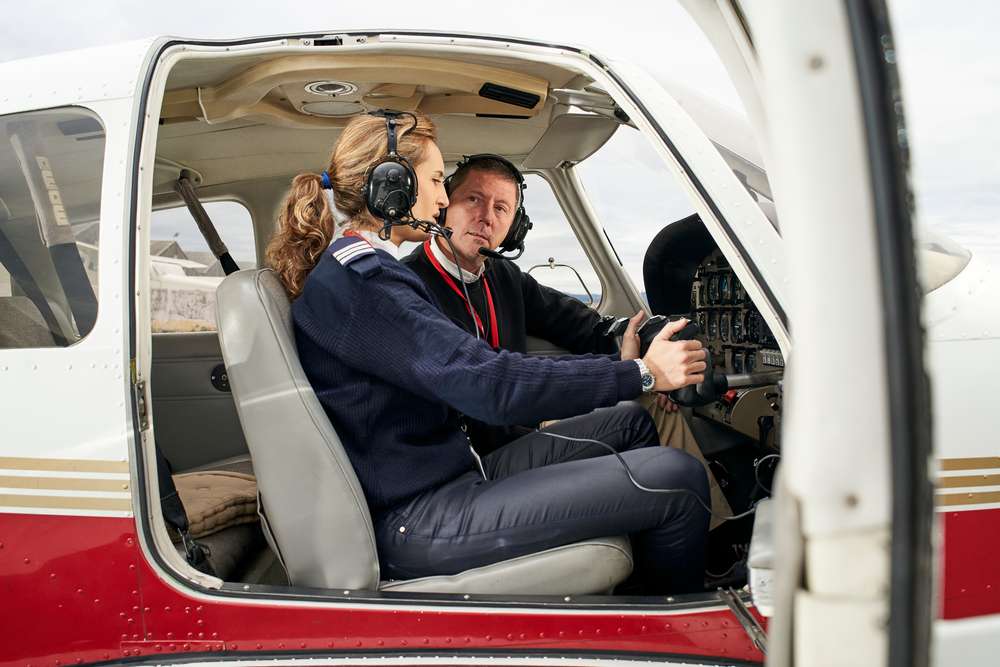Aviation Courses After 10th
For students interested in aviation careers, there are certified courses available after completing 10th grade. This guide explains how these programs work, what subjects are covered, and what future opportunities may come from early entry into the aviation field.

What aviation training options are available after 10th?
After completing 10th grade, students have several aviation training options to choose from. These courses cater to different aspects of the aviation industry, allowing you to align your education with your specific interests and career goals. Some popular choices include:
-
Diploma in Aviation Technology
-
Certificate in Ground Staff and Cabin Crew Training
-
Diploma in Aircraft Maintenance Engineering
-
Certificate in Air Traffic Control
-
Private Pilot License (PPL) training
These programs provide a solid foundation in aviation concepts, preparing students for further specialized training or entry-level positions in the industry.
What pilot courses are available for high school students?
For aspiring pilots, there are specific courses designed to kickstart your journey towards becoming an aviator. While most commercial pilot training programs require candidates to be at least 17 years old, high school students can begin their pilot education through:
-
Ground School Training: Learn the theoretical aspects of flying, including aerodynamics, navigation, and aviation regulations.
-
Private Pilot License (PPL) Training: Begin flight training under the supervision of certified instructors, typically starting at age 16 or 17.
-
Glider Pilot Certification: Some countries allow glider pilot training for students as young as 14, providing valuable flight experience.
-
Aviation Summer Camps: Participate in immersive programs that combine classroom instruction with hands-on flight simulator experience.
These courses provide a strong foundation for future commercial pilot training and help students determine if a career as a pilot is right for them.
What does an aviation career guide typically include?
An aviation career guide is an essential resource for students exploring their options in the industry. A comprehensive guide typically covers:
-
Overview of various aviation careers (pilots, air traffic controllers, aircraft mechanics, etc.)
-
Educational requirements for each career path
-
Licensing and certification processes
-
Job outlook and growth projections
-
Salary expectations for different roles
-
Skills and qualities needed for success in aviation
-
Internship and apprenticeship opportunities
-
Tips for networking and building a professional portfolio
By consulting an aviation career guide, students can make informed decisions about their educational and career paths in the aviation industry.
What air hostess training options are available after 10th?
For those interested in becoming flight attendants or cabin crew members, several training options are available after completing 10th grade:
-
Certificate in Cabin Crew Training: Short-term programs (3-6 months) covering basic skills and knowledge required for the role.
-
Diploma in Aviation Hospitality: One-year programs offering comprehensive training in aviation hospitality and customer service.
-
Vocational Courses: Some schools offer vocational training in airline and airport management, including cabin crew modules.
-
Aviation Academies: Specialized institutions provide air hostess training programs tailored for high school graduates.
These courses focus on developing essential skills such as safety procedures, emergency management, customer service, and grooming standards required for a successful career as a flight attendant.
What aviation diploma programs are available?
Aviation diploma programs offer a more comprehensive education for students looking to build a strong foundation in the field. Some popular diploma programs available after 10th grade include:
-
Diploma in Aeronautical Engineering
-
Diploma in Aviation Management
-
Diploma in Airport Operations
-
Diploma in Aircraft Maintenance Technology
-
Diploma in Avionics
These programs typically last 2-3 years and provide in-depth knowledge and practical skills relevant to specific areas of the aviation industry. Graduates of these diploma programs often have better job prospects and are well-prepared for further specialization or advanced degrees in aviation.
| Program Name | Duration | Key Focus Areas |
|---|---|---|
| Diploma in Aeronautical Engineering | 3 years | Aircraft design, propulsion systems, avionics |
| Diploma in Aviation Management | 2 years | Airline operations, airport management, aviation laws |
| Diploma in Airport Operations | 2 years | Ground handling, passenger services, security procedures |
| Diploma in Aircraft Maintenance Technology | 3 years | Aircraft systems, maintenance procedures, safety regulations |
| Diploma in Avionics | 3 years | Aircraft electronics, communication systems, navigation equipment |
Prices, rates, or cost estimates mentioned in this article are based on the latest available information but may change over time. Independent research is advised before making financial decisions.
The aviation industry offers a wide range of exciting career opportunities for students after 10th grade. From pilot training to air hostess courses and comprehensive diploma programs, there are numerous paths to explore based on your interests and career goals. By starting your aviation journey early, you can gain valuable knowledge and experience that will set you apart in this competitive and dynamic field. Remember to thoroughly research each option, consider your long-term career objectives, and choose a program that aligns with your passion for aviation.




